Memory Frequency Scaling in SFF Systems: An Investigation with SO-DIMMs and Coffee Lake
by Ganesh T S on November 28, 2018 8:00 AM ESTDRAM Options for the ASRock DeskMini GTX (Z370)
There are a number of DDR4 SO-DIMM kits compatible with the ASRock DeskMini GTX. In addition to the frequency, the timing parameters / latency numbers also influence the performance. For our evaluation today, we are going to look at four different options with three different kits:
- Kingston HyperX Impact DDR4 SO-DIMM 2x8GB @ 3066 MT/s, 20-22-22-42
- Kingston HyperX Impact DDR4 SO-DIMM 2x8GB @ 2933 MT/s, 17-19-19-39
- Team Group T-Force Vulcan DDR4 SO-DIMM 2x8GB @ 2666 MT/s, 18-18-18-38
- Team Group T-Force Vulcan DDR4 SO-DIMM 2x8GB @ 2400 MT/s, 15-17-17-35
Out of these configurations, the HyperX Impact ones were both from the same kit rated for operation at up to 3200 MT/s. Unfortunately, the ASRock DeskMini GTX refused to boot at 3200 MT/s. However, setting that XMP profile and manually tweaking the frequency to 3066 MT/s enabled the system to operate normally. The two T-Force Vulcan configurations were enabled using distinct kits.
Kingston HyperX Impact [ 2933 MT/s, 17-19-19-39 ] [ 3066 MT/s, 20-22-22-42 ]
The Kingston HyperX Impact HX432S20IB2K2/16 SO-DIMM kit used in our review supports two XMP profiles - one at 2933 MT/s with a 17-19-19-39 timing, and another at 3200 MT/s with a 20-22-22-42 timing. While the former profile was a one-click process in the BIOS to activate, the latter caused some issues and had to be run at 3066 MT/s. We could have spent more time optimizing the latency numbers for the 3066 MT/s operating point. However, keeping in mind the number of benchmarks to process, we decided to make do with minimal changes to the BIOS after the XMP activation.
AIDA64 includes a quick memory benchmark that provides some basic bandwidth and latency numbers to ensure that the kits are operating as expected.
At 3066 MT/s, the RAM-to-RAM copy (representative of both read and write speeds) comes in at 36924 MBps, and an average latency of 54.6 ns.
The relevant BIOS screenshot for the 2933 MT/s configuration are provided below.
The AIDA64 benchmark for the 2933 MT/s configuration shows lower read and write bandwidth numbers compared to the 3066 MT/s configuration. However, the copy benchmark comes in a tad higher at 37685 MBps, and this is in part due to the 51.6 ns latency metric (compared to 54.6 ns for the DDR4-3066 configuration).
The kit is currently being sold for $168.
Team Group T-Force Vulcan [ 2666 MT/s, 18-18-18-38 ]
The Team Group T-Force Vulcan TLRD416G2666HC18FDC-S01 SO-DIMM kit supports one XMP profile at 2666 MT/s with a 18-18-18-38 timing.
The AIDA64 Cache and Memory Benchmark numbers are presented below. The RAM performance in terms of bandwidth is a bit lower than the DDR4-3066 and DDR4-2933, as expected. The tighter timing numbers (in terms of clock cycles) are unfortunately not able to make up for the loss from the frequency component, and the latency ends up being slightly worse at 55.7 ns.
The 8GB member of the kit is currently being sold for $65. The kit itself doesn't seem to be available for a reasonable price at any e-tailer in the US, but, it is fine to buy a couple of the 8GB modules for use in a system. In our pricing table, we have assumed that this kit costs $130.
Team Group T-Force Vulcan [ 2400 MT/s, 15-17-17-35 ]
The Team Group T-Force Vulcan TLRD416G2400HC15BDC-S01 SO-DIMM kit works out of the box at 2400 MT/s with a 15-17-17-35 timing. It supports a single XMP profile. With all Coffee Lake systems supporting DDR4-2400 at the minimum, it doesn't need to. However, the XMP support is useful for older platforms.
The AIDA64 Cache and Memory Benchmark numbers are presented below. As expected, this base frequency configuration comes in with the lowest bandwidth numbers and highest latency among all the tested configurations.
The 4GB single SO-DIMM version in this family is currently being sold for $37. No current listing for the 8GB kit could be found. In our pricing table, we have assumed that the kit being evaluated at 2400 MT/s costs $130, though it has got to be lower than the 2666 MT/s kit in retail pricing (as it is the set with the lower performance in the T-Force Vulcan DDR SO-DIMM product line).
A note about the performance numbers from the artificial AIDA64 memory benchmark - the bandwidth numbers are as expected, varying from 35043 MBps for the DDR4-2400 kit to 43377 MBps for the DDR4-3066 kit. The latency numbers have a surprise, though - the best seems to be 51.6 ns for the DDR-2933 kit. In the rest of this review, we will see how these numbers influence day-to-day usage and computing workloads using both artificial and real-world benchmarks.


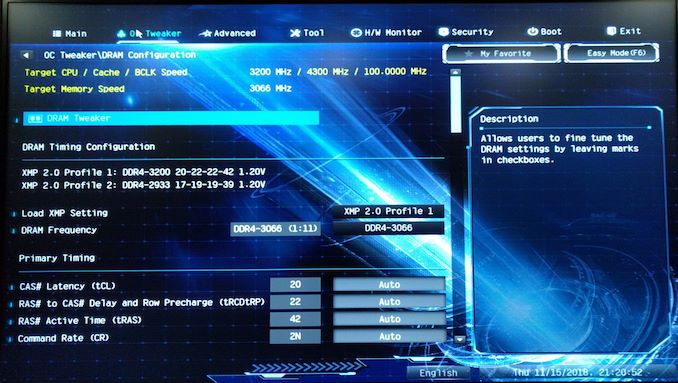
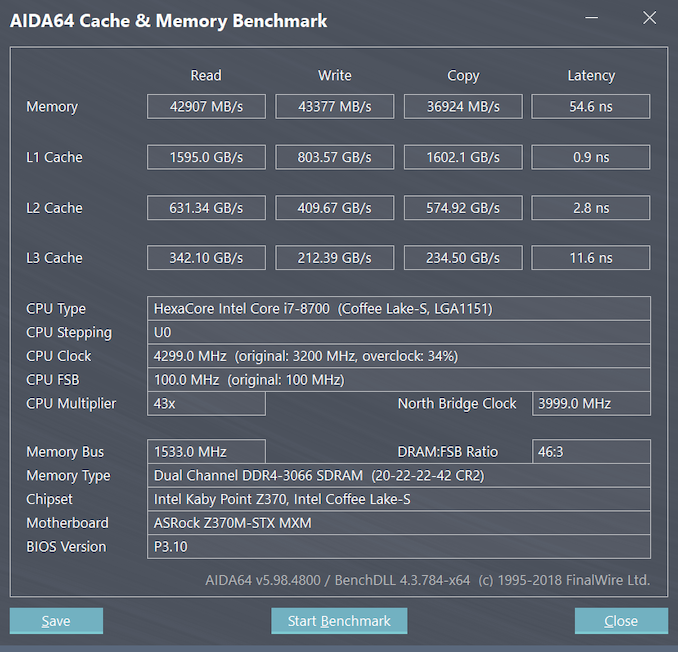
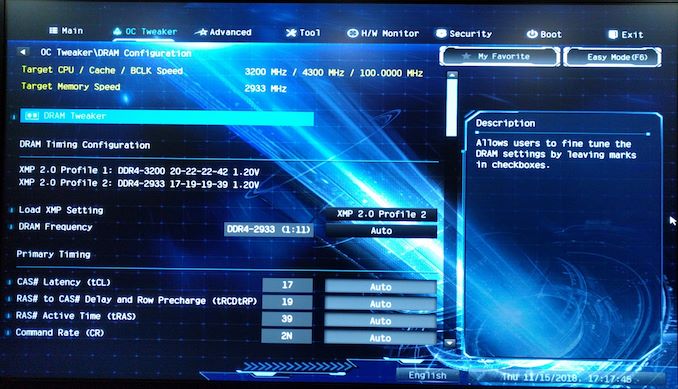
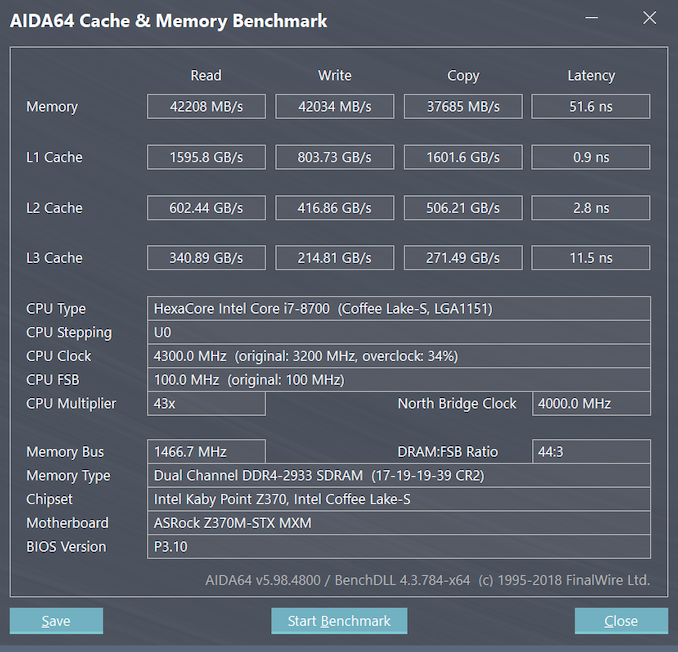
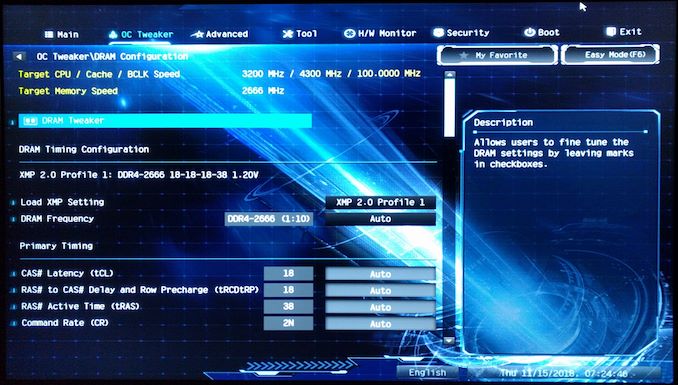
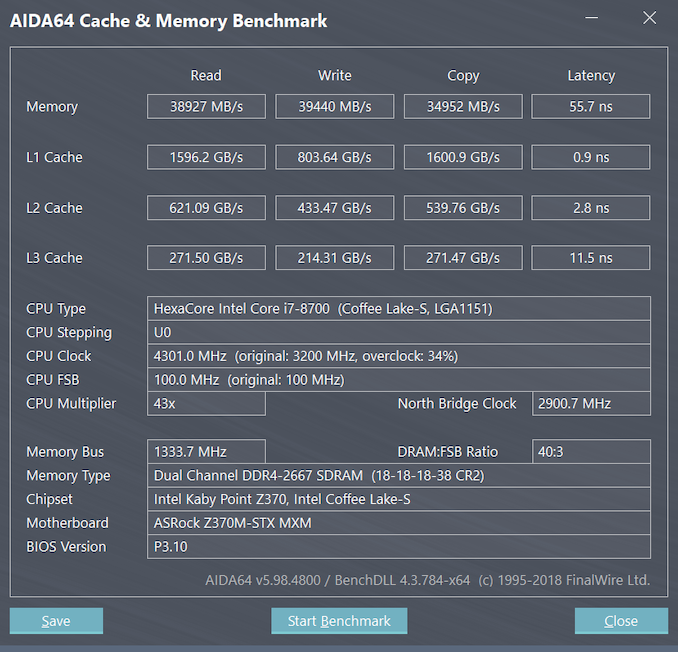
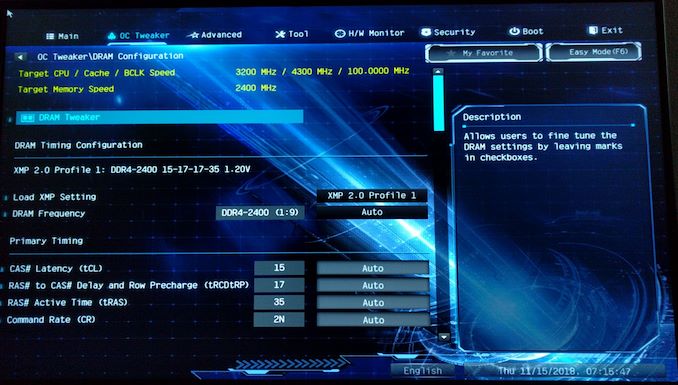
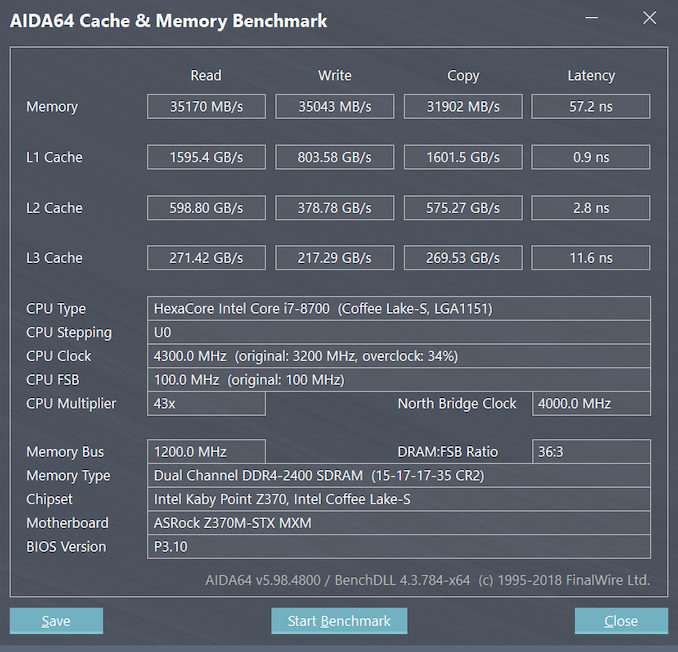








25 Comments
View All Comments
BedfordTim - Wednesday, November 28, 2018 - link
It would have been interesting to see some bargain basement memory in the comparison. Is there a specification below which we start to see a difference?goatfajitas - Wednesday, November 28, 2018 - link
I dunno, I think it gets the job done. The takeaway is the same as it has been for a decade... Higher bandwidth memory with higher latency provides very little actual performance improvements.qlum - Wednesday, November 28, 2018 - link
To add some qualifiers to what you said:In regards to cpu performance
on intel's core achitecture
IGP performance, AMD, certain memory limited workloads tell a different story.
goatfajitas - Wednesday, November 28, 2018 - link
"on intel's core achitecture"Agreed.
Flunk - Wednesday, November 28, 2018 - link
No, not really. The slowest and faster RAM here aren't that far off. What it really tells us is that minimal increases in RAM performance can bring noticeable performance improvements but only in memory-heavy applications. Which is pretty much exactly what you'd expect.goatfajitas - Wednesday, November 28, 2018 - link
"No, not really. The slowest and faster RAM here aren't that far off."That is what I said. Barely noticeable even in synthetic benchmarks.
BedfordTim - Wednesday, November 28, 2018 - link
There is a difference in two memory heavy applications. The RAM drive shows a ~20% benefit and one of the image processing benchmarks shows ~10% benefit.There will be a tiny number of people doing very specific applications who might notice the difference.
peterfares - Wednesday, November 28, 2018 - link
Not sure what other games it applies to but in Overwatch the RAM speed actually has a pretty significant impact on FPS when you start going very high FPS.https://www.reddit.com/r/Overwatch/comments/9srhx5...
Not sure what what speed the benefits stop, but improvements were still easily seen at 3200MHz.
Death666Angel - Wednesday, November 28, 2018 - link
It just seems a bit weird to test those speeds. G.Skill RipJaws SoDIMM DDR4-3200 CL18-18-18-43 are available in 8GB form for the same price as regular DDR4-3200 RAM and the 16GB variant is only slight more expensive (would be 5th in the price ranking with regular DDR4-3200 RAM). Is that just a weird German price thing? I was even considering buying them with an adapter just so I can have some more potential usability for the future. :Ddeil - Wednesday, November 28, 2018 - link
IMHO small things that does not even make the cpu leave lower power state happens faster, page loading, folder browsing etc...might be just bias or simple "better timings" that was also the case for me. Still I feel something different in day-to-day stuff.